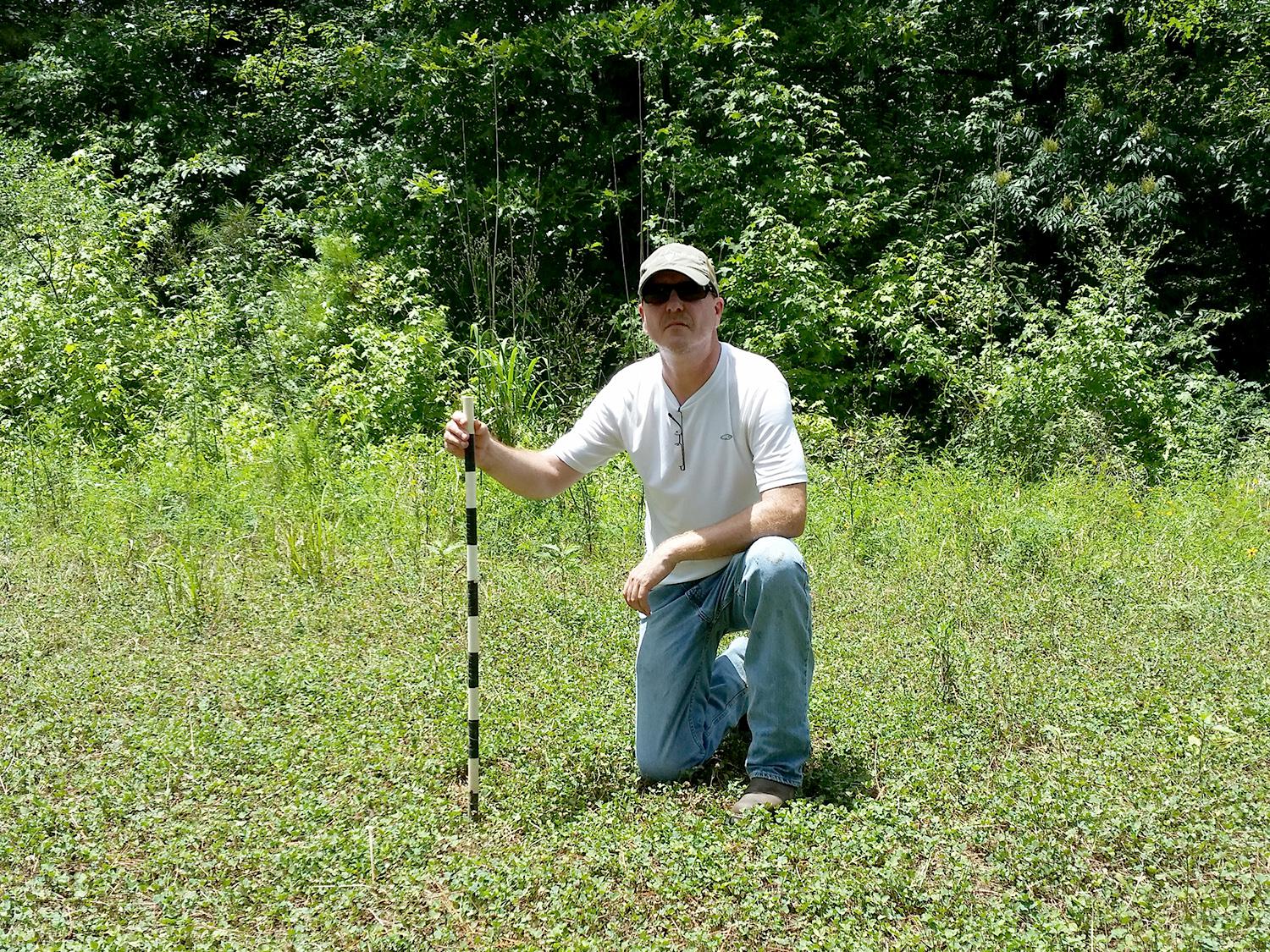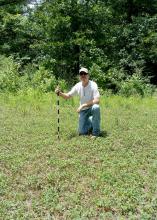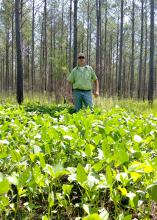Information Possibly Outdated
The information presented on this page was originally released on July 15, 2016. It may not be outdated, but please search our site for more current information. If you plan to quote or reference this information in a publication, please check with the Extension specialist or author before proceeding.
Annuals, perennials go head-to-head in the food plot debate
STARKVILLE, Miss. -- When planting wildlife food plots, which is better: annuals or perennials? Ideally, you should have different plots designated for both cool- and warm-season annuals, as well as perennials.
Some people believe planting only perennials, such as ladino white clover or chicory, is the way to go. They think they will save money and time by not having to plant every year, and they consider perennials more beneficial to wildlife because forage is available throughout most of the year. While these are valid points, there are other factors to consider that might change their minds about perennials.
First, the ability to establish perennial food plots will depend on the types of soil. To become established, perennials need heavier, fertile soils that drain but still retain some moisture. I have tried to establish both ladino white clovers and chicory in poorer, well-drained soils, but they could not make it through the summer.
To keep perennials productive and carry them over for several years, you can’t just plant and walk away, even with the right soils. In addition to applying the recommended amounts of lime and fertilizer each year, you will also have to battle both cool- and warm-season weeds.
Proper weed control requires timely applications of a selective herbicide at least twice each year for the life of the plot. Not only does this result in added time and expense, but you also will need a spray rig for a tractor or ATV. Depending on the number and size of perennial food plots you have, you may be able to get away with using a backpack sprayer, which will be more tedious and even more time-consuming.
Mowing also is recommended to maximize production of perennial food plots. Mowing helps control weeds and stimulates nutrient-rich plant growth. Mow once in late spring or early summer after clover has flowered and chicory “bolts” (begins to grow stems) and once in late summer before weeds flower.
While cool-season annual food plots have to be planted each year, they do not require near the amount of maintenance as perennial food plots. In some areas where the seedbank in the soil is full of weeds, you may need an herbicide application to control cool-season weeds. Otherwise, prepare the seed bed, plant, cover and you’re done.
As for production values, an established perennial plot will produce more forage per acre over the course of a year than a cool-season annual plot. But when we compare their production from a seasonal standpoint, cool-season annual plots of oats, wheat, and Balansa or crimson clover can produce nearly twice the amounts of forage as perennial plots during winter and early spring.
Similarly, warm-season annual plots of cowpeas or forage soybeans can produce almost three times the amounts of forage as perennial plots during mid- to late summer. The two most difficult seasonal periods for many wildlife species are winter and late summer. Perennial production peaks in mid-spring through early summer, so they are not adequate for filling the nutritional void during these tough periods.
Most people think it would be cheaper to plant and maintain a perennial food plot versus planting cool- and warm-season annuals every year, but it’s not. A recent study conducted by food plot experts at the University of Tennessee showed that over a two-year period, a 1-acre, cool-season plot of wheat (October to early April) and a 1-acre, warm-season plot of cowpeas (May to September) produced a combined 24,693 pounds (dry weight) of forage. By comparison, a well-managed 1-acre, perennial plot of ladino clover produced 13,846 pounds (dry weight) of forage over the entire two years at a cost of half a penny more per pound.
Perennial food plots can play an important role in areas with poor habitat conditions and/or high deer densities. These areas are most often leased properties where decisions to make habitat improvements and/or reduce deer densities are not yours to make. Even on well-managed properties where your main goal is to have more deer, perennials can help reduce habitat damage.
Perennials certainly have their place in the world of wildlife food plots, but they are not the food-plot “silver bullet” some people make them out to be. While they do have some advantages, I don’t recommend planting a property solely in stand-alone perennial food plots, nor do I recommend perennial food plots as an alternative to warm-season annual food plots.
Whether you plant food plots to attract wildlife or to provide supplemental nutrition during hard times, annual food plots should be your first priority. Not only will you get more bang for your buck, but they also will provide greater benefits to wildlife when they need it most.
 Editor’s Note: Extension Outdoors is a column authored by several different experts in the Mississippi State University Extension Service.
Editor’s Note: Extension Outdoors is a column authored by several different experts in the Mississippi State University Extension Service.

Editor’s Note: Extension Outdoors is a column authored by several different experts in the Mississippi State University Extension Service.









